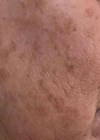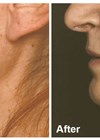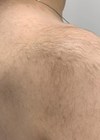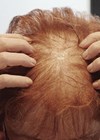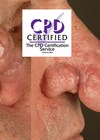Case Reports
Treatment of chrono and photoageing with combined light sources
Skin ageing depends on various intrinsic (chronological) and extrinsic (ambiental) factors: chrono and photoageing changes include wrinkles, abnormal pigmentation, skin laxity and telangiectasia. The Nordlys™ system is a multi-platform device that incorporates dual-filtering Selective Waveband Technology (SWT®) and two fractional,...
Facial rejuvenation with the Profound RF System
Ageing of the face has become more noticeable among men and women in the modern world. The new work-from-home environment with more and more online meetings has created surroundings where people see themselves repeatedly on screen and therefore many have...
New IPL technology as treatment for melasma
Background Melasma is an acquired refractory pigmented skin disease. It is a complex multifactorial disorder and its pathogenesis has not yet been fully elucidated. Risk factors include genetic predisposition, sun exposure, stress, medications, and pregnancy. Melasma is divided into three...
Clinical case of hypertrichosis
Laser hair removal remains the best method of eliminating unwanted hair, including cases of hirsutism. Due to the pathogenesis of hirsutism, laser therapy alone can be insufficient to treat it. Male pattern terminal hair growth is caused by androgens and...
Non-ablative Er:YAG-laser treatment of female patterned hair loss
Female patterned hair loss (FPHL) is the most common hair loss disorder in women. Initial symptoms may lead to progressive hair loss [1]. FPHL has emerged as the preferred term for androgenetic alopecia (AGA) in women due to the uncertain...
Recurrent corneal erosions secondary to isotretinoin use
This article originally appeared in Eye News Dec/Jan 2021 Isotretinoin (13–cis-retinoic acid) is the first line treatment for moderate to severe nodulocystic or papulopustular acne [1,2]. Although it is a safe medication, it has several adverse side-effects, including ophthalmic manifestations,...
Novel picosecond handpieces for the treatment of pigmentation
Pigmentary disorders are common; several treatment modalities are available, ranging from topical therapy to chemical peels and lasers. The advent of ultrashort pulsed picosecond lasers (PSL) has transformed the way tattoos and benign pigmented lesions are treated. Unlike long-pulsed lasers...
Adapting to change in clinical practice: a post-inflammatory hyperpigmentation case
This article has been verified for CPD. Click the button below to answer a few short questions and download a form to be included in your CPD folder. Post-inflammatory hyperpigmentation (PIH) secondary to any inflammatory cause or cutaneous injury is...
CO2 laser treatment of rhinophyma
This article has been verified for CPD. Click the button below to answer a few short questions and download a form to be included in your CPD folder. The authors describe their technique and experience of treating rhinophymas with a...
Hydroquinone-induced hyperpigmentation: a case of exogenous ochronosis in a Hispanic patient
Achieving flawless skin as part of the desire to be perceived as ‘beautiful’ is a common sentiment shared by many cultures [1]. Of the many treatment options and products available on the market, the most common chemical agent to achieve...
Case Study: Combination therapy with energy-based devices for improvement of facial photodamage, skin laxity and textural irregularities
Renowned dermatologist Michael Gold takes us through why combination therapies are becoming increasingly popular in facial rejuvenation. Combination therapies with energy-based devices (EBDs) have become very popular in cosmetic and aesthetic surgical circles. This applies to both the more invasive...
Thermal injury and false eyelashes
Please Click here for the CPD Feedback form on this article The authors provide a case of cyanoacrylate glue causing a thermal burn on the eyelid and explain how this type of burn should be managed. The use of false...


